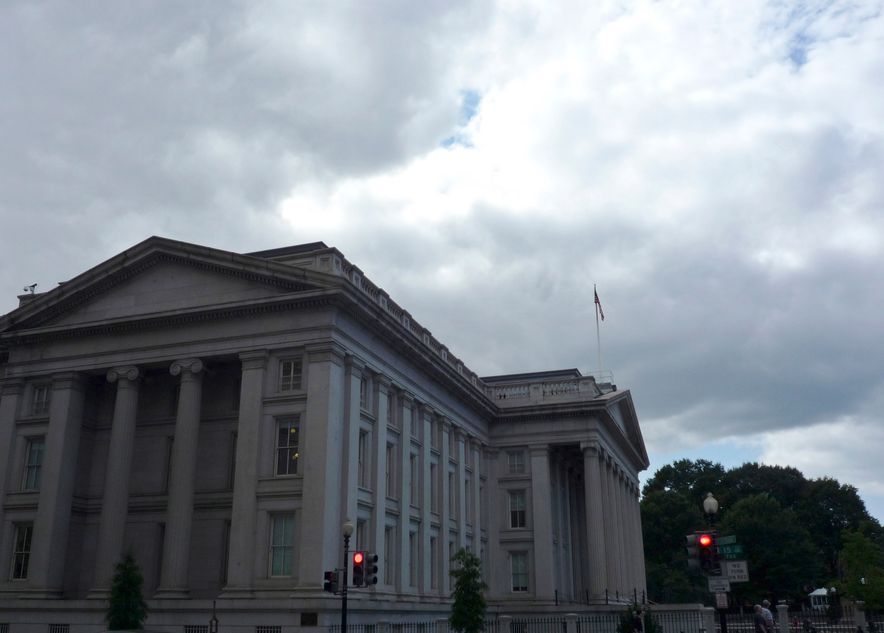Regulators need to clarify the scope of incoming rules that will change the way institutions operate in the US$29trn US Treasury market, finance executives told an industry conference on Tuesday, underlining the challenges that remain ahead of the world's most important bond market moving to mandatory clearing next year.
The US Securities and Exchange Commission is looking to increase the resilience of the Treasury market by mandating clearing by December 2026 for all trades that involve a direct participant of the Depository Trust and Clearing Corp’s Fixed Income Clearing Corp, the largest clearinghouse for Treasuries.
However, industry experts say the rules do not specify where that direct FICC participant, or their counterparty, must be located. That raises questions over whether the rules will apply to overseas private investors, who hold about US$5trn in Treasuries.
“There are still open questions on how non-US firms are being impacted [by these clearing rules, and] it is a very important consideration,” said Agha Mirza, global head of rates and OTC products at CME Group, speaking at an International Swaps and Derivatives Association event in London on Tuesday.
“We understand that [the Securities Industry and Financial Markets Association] has recently asked for SEC clarity around the overall extraterritorial scope of the rule and necessary SEC engagement with overseas regulators … [and] we look forward to the outcome of those discussions,” he said.
Laura Klimpel, head of fixed income and financing solutions at DTCC, said that it is currently unclear whether the Treasury clearing rule would apply to a situation where one branch of a bank is based in the US but its transacting party is a non-US branch of the same bank, for instance.
“That’s the focus of a lot of discussion and advocacy right now,” she said, also speaking at the ISDA event. “The other open question relates to transactions that are executed on platforms that are outside of the United States … Are those subject to the clearing requirement or not?”
While waiting for answers, many institutions are already moving towards voluntarily clearing of their Treasury transactions. FICC is clearing over US$11trn in Treasuries a day so far this month – well above US$4.5trn cleared in September 2022, when the Treasury clearing rule was first proposed.
Nate Wuerffel, head of market structure and product-global collateral at BNY, said institutions are clearing voluntarily to make the most of shifting liquidity conditions. That includes central banks, which are exempt from the rules.
“In the future, you'll [still] be able to do non-centrally cleared [transactions] but … liquidity is going to be low in that so I believe that liquidity will shift into centrally cleared products,” he told the ISDA event.
Done-away models
Aside from the scope of the rules, questions also remain over how they'll be implemented in practice. In February, the SEC granted a 12-month extension to the clearing rules going live amid growing concerns over the industry’s readiness, including the need for clearing models that can handle more activity from buyside firms.
Seven months on, however, the ISDA panelists said little progress has been made. This is especially true for “done-away” clearing models, which involve banks clearing Treasuries for their clients within their prime brokerage, agency clearing or futures commission merchant business units.
“[Progress for] done-away infrastructure … has been slow,” said Stephen Berger, global head of government and regulatory policy at Citadel. “Not much has been achieved in the last six months, and we're 15 months, at least, away from the deadline … so that's an area of concern. I think a little more leadership and forward-looking perspective is needed to come up with a viable set of documentation for done-away clearing to work.”
CME, DTCC and ICE have all set their sights on providing done-away clearing services, but the SEC has yet to formally approve any of their plans. While operational testing is already available, CME’s done-away services should be approved by the SEC no later than October 19, said Mirza.
“In the meantime, we are continuing our operational build,” he said. “We will be engaging with industry participants in the coming months as we get ready to launch.”






